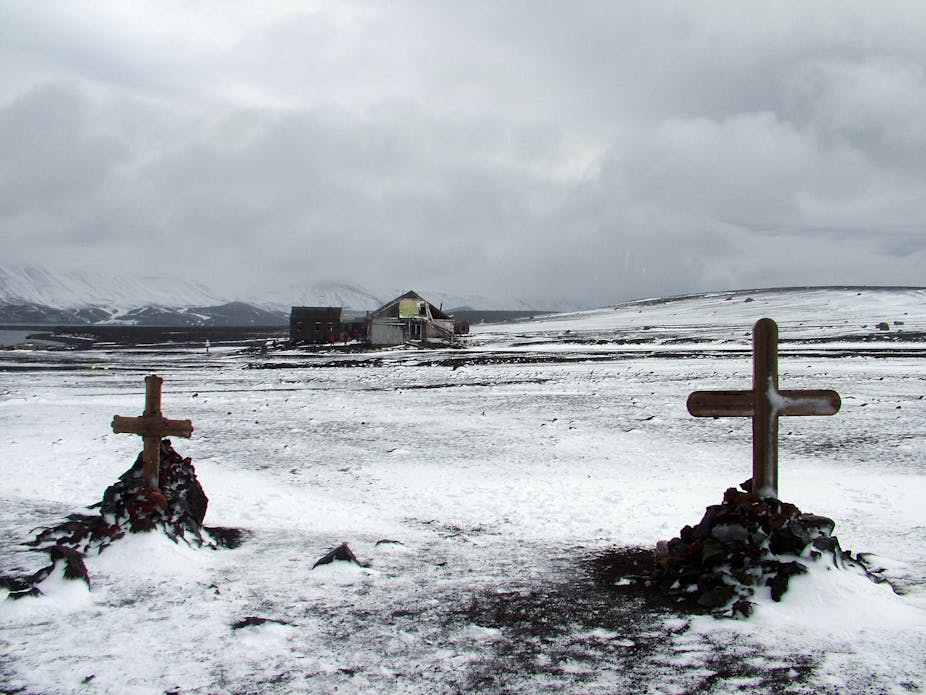Does Australia have strategic interests in Antarctica? Do we really think of the region as the “common heritage of mankind”?
The Antarctic Treaty states that it is “in the interest of all mankind that Antarctica shall continue forever to be used exclusively for peaceful purposes and shall not become the scene or object of international discord.”
What policies satisfy those ends? Can we promote our national claims? What could Australia do to protect these extraordinary regions, for all time? Are we trading our international commitments for national interest?
Answers are necessary for a country claiming almost half the White Continent. But public and bureaucratic discourse on these topics is unfortunately lacking.
A year of anniversaries might be a good time to start: 2011 is the 100th year since Douglas Mawson led the first Australian Antarctic expedition, the 75th year since the proclamation of the Australian Antarctic Territory, and the 50th year since the Antarctic treaty was signed. Importantly, it’s also the 20th anniversary of the Madrid Protocol to the Antarctic Treaty.

Australia’s policy framework for Antarctica is in principle quite simple:
- Maintain the Antarctic Treaty System and enhance Australia’s influence in it;
- Protect the Antarctic environment;
- Understand the role of Antarctica in the global climate system;
- Undertake scientific work of practical, economic and national significance.
Whether or not these goals are appropriate is moot; but we must recognize two geopolitical realities: that Australia is seen by other states as engaging in “frontier vigilantism” to promote its territorial claims, and that other states are projecting their influence in Antarctica.
The so-called “Polar Panda”, China, is but one example.
A mood of change and vulnerability in Antarctic governance is emerging. It is compounded by significant environmental change. Both are challenges for Australian politicians, who have, to date at least, avoided engagement on polar issues. The last time federal parliament (the joint standing committee on national capital and external territories) looked at Antarctica was almost 10 years ago.
The committee had to solve a crisis in funding for the Antarctic Division. There had been no increase in the budget appropriation since at least the late 1990s, and the staff had difficulty providing the necessary basic support and transport functions, let alone running a serious research program.
Working in polar regions is almost unimaginably expensive and logistically complex to the uninitiated, and Australia’s polar community was threatened.
The result of the inquiry was an increase in the Antarctic Division budget from roughly $88 million in 2004-05 to $95 million in 2005-06.
The current 2011-12 budget is bigger, $149 million, but most of the difference is time-limited top up funding for special projects like the critical resupply air link, which is incredibly only contracted on a year by year basis.

When you take away the special items, the recurrent budget has barely changed for may years. In comparison, the federal government paid almost $46 million for an abortive bid for the 2022 World Cup soccer tournament.
The result: the Australian Antarctic Division will not offer logistics to any further projects for the 2011–12 season.
Budgetary tensions aside, there are other reasons we need to focus on the poles.
These regions have a profound and direct effect on international politics and behaviour as a result of the impacts of climate change.
In turn, they have the potential to inflict significant pain on places far beyond their borders through a range of positive feedbacks in the climate system.
The Arctic and Antarctica are both victim and villain in the climate change debate. The Antarctic is melting at an ever increasing rate (currently rising at 14 Gt/yr2), and the Arctic is in a far, far worse state.

So we face a suite of conundrums, with a sting in the tail.
Our current policy framework seeks to maintain and support the Antarctic Treaty System while simultaneously promoting our sovereignty position.
We think Antarctica is important, but provide meager resources.
We promote a vision for the continent: “Valued, Protected, and Understood”.
We see it as a wilderness of peace and science, the ultimate expression of international goodwill and cooperation.
But this romantic vision belies a darker reality: being a claimant state is fundamentally a claim on future access to resources. The behavior of countries around the Arctic Ocean in recent years is blunt confirmation of the realpolitik of the poles.
There are other models that Australia could adopt for Antarctic policy, showing leadership without territoriality, promoting cooperation and knowledge generation without ownership.
Helping the world to understand the values and importance of Antarctica would be a good place to start.
Want to know more about the Antarctic Treaty? Read our Explainer here.

